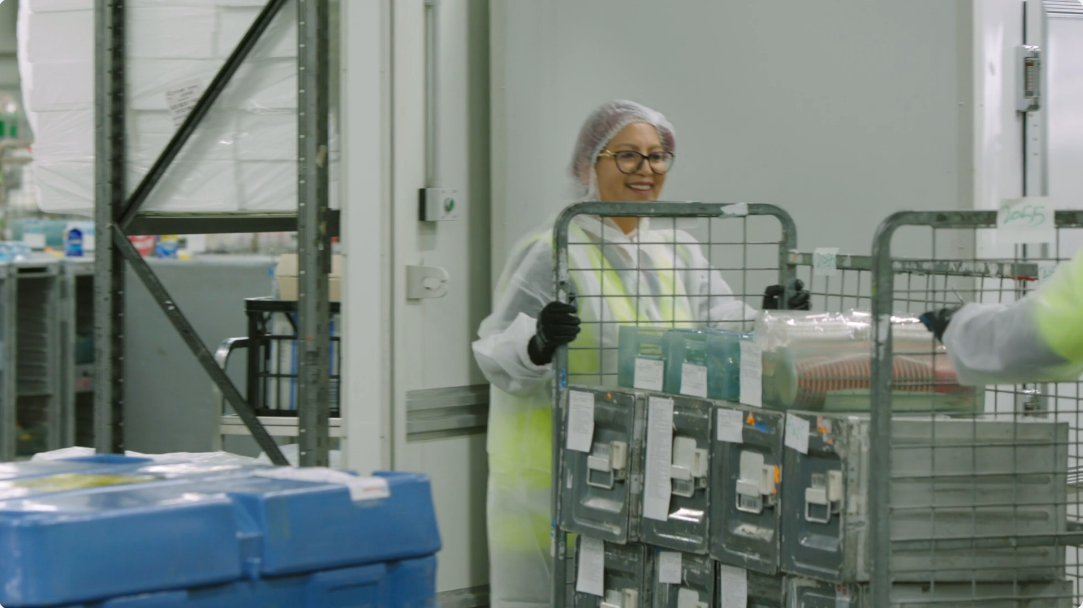60 years ago, in 1959, Chandler Macleod was established by Alf Chandler and Doug Macleod as the first industrial and organisational consulting firm in Australia. They quickly built a reputation of expertise in predicting employee behaviour and critical success factors for roles, teams and organisations, and used this expertise to provide specialised recruitment solutions.
To celebrate turning 60, our Chandler Macleod People Insights team decided to take a look back through the history of Psychometric Assessments from our early adoption in 1959, to the more digitised environment we exist in today.

Early Adoption by Chandler Macleod
Whilst the beginning of psychometric assessments can be traced back to imperial China, where exams measuring cognitive ability were introduced for civil servants, Chandler Macleod first gained a licence for use of the Humm Wadsworth temperament scale in 1959.
The Humm Wadsworth temperament scale was originally developed in 1934 in response to an incident where an employee of a large organisation killed his supervisor (wow, intense!). It was based upon a model of personality developed in 1927, in which abnormal behaviour (i.e., clinical mental disorders) were uncontrolled manifestations of regular personality. Consequently, the personality dimensions in the Humm Wadsworth Temperament scale were labelled: Normal, Hysteroid, Cycloid (Manic and Depressed), Schizoid (Autistic and Paranoid), and Epileptoid. As with other personality assessments at the time, the focus was on emotional adjustment.
Other industries utilising assessments
During this period, psychometric assessment was well established in military organisations to assess the suitability of applicants to various roles. The United States Armed Services Vocational Aptitude Battery, a primarily ability-based battery of psychometric assessments, was first introduced in 1968, and is still used today (having undergone major revisions).
There was also a widespread use of psychometric assessment in industry. Estimates of psychometric assessment use in industry range from 32% of companies using tests for hourly workers, to 75% of companies using tests.
Travelling on shaky ground
While the use of ability assessments was well established, the use of personality assessments was more controversial. This was likely because there were a large variety of personality assessments available with differing levels of quality, and rigour in their application. Or put another way, there were “untested tests for use in selection by unqualified testers”.
The criticism of personality assessment reached a peak in 1968, with the publication of Walter Mischel’s influential book Personality Assessment. In this book, Mischel argued that personality traits did not reliably predict behaviour. Some took his arguments as an attack on trait psychology, and thought that his arguments were evidence that personality does not even exist (which is insane, I know)! Mischel is also widely known for the “Marshmallow test” which has been widely recreated and posted on YouTube like the one below
At this time there were a number of important law suits in the United States, which have shaped the way psychometric assessment is conducted for selection. Firstly, psychometric assessment needs to be job-relevant or consistent with business necessity, and valid. Secondly, they need to be culturally fair, or not show unnecessary adverse impact. Rest assured, these principles or legal requirements are ingrained into all modern psychometric assessments.

Research strengthens the evidence
If the 1960s and 70s saw a decline or stagnation in psychometric assessment, the 1980s and 1990s saw a boom. This came about for a number of independent reasons.
Initially there was an expansion of the domain of “job performance” from simply being how well you did a task, to a more multi-dimensional concept. Previously, job performance was characterised only by how well you completed tasks assigned to you (e.g., how many widgets you made) but modern models developed to be multidimensional, and include things like how much discretionary effort you put into your work, whether you contribute to your team or the organisations functioning beyond your individual role requirements, and whether you engage in counterproductive work behaviours (e.g., theft, taking sick days when you’re not sick, being rude to clients or co-workers).
Additionally, the United States Army conducted Project A; a seven-year project to refine, expand, and validate their selection and categorisation procedures, to be used across 276 entry-level positions, and for 400,000 applicants per year. The results of this study found that both ability and personality assessments were related to job performance, so long as the personality traits selected were conceptually related to the role or work.
The 1980s and 1990s also saw a dramatic increase in research leading to the broad acceptance of a unifying framework of personality traits: The Big Five. The Big Five contain the personality traits of extraversion, emotional stability, agreeableness, conscientiousness, and openness to experience. This taxonomy of traits allowed the unification of disparate streams of research under the one umbrella.
Finally, a number of influential meta-analyses (sort of a king research study, which combines other studies) were released. One compared different selection methods and showed that ability assessments were amongst the strongest predictors of job performance across a range of occupations – much stronger than years of job experience, age, and years of education. Others showed that personality (the Big Five) predicted job performance across a range of roles, and as with Project A, that some traits were better predictors of job performance in roles that were conceptually related.

Rise of the digital age; 2000 – current day
The period from the turn of the millennium to now has seen technology disrupt, enhance, or change many aspects of business, and psychometric assessment has been no different. The rise of availability and access to personal computers or other electronic devices has meant that many psychometric assessments are now computerised, whereas previously, they would have been pen and paper based. This computerisation of psychometric assessment has led to improvements in efficiency and accuracy of scoring and also made it more available to business leaders.
Computerised adaptive testing has only relatively recently become more widely available. In computerised adaptive testing, the item shown to a candidate depends upon their response to the previous item. That is, if a candidate gets an item correct, the next item will increase in difficulty, whereas if they get the answer wrong, the next item will decrease in difficulty. This allows for assessments which are just as – or even more – accurate but take the candidate less time complete. Similarly, Item Response Theory is a method of scoring which relies upon relatively sophisticated and complex calculations. Although the statistical scoring methodology has been around since the 60s, the increase in computerised testing makes the implementation of assessments using Item Response Theory scoring more feasible
We have also seen a rise in the availability of Game-based assessment which is both engaging and accurate and is particularly useful for volume recruitment in specific industries.
Into the future
There’s no denying that Psychometric Assessment is here to stay. With the increasing rate of Artificial Intelligence in our lives and the loss of some traditional jobs to AI, those transferable ‘soft’ skills are becoming more and more important for a successful, thriving organisation. Being able to predict factors like emotional intelligence, social persuasion, resilience and empathy is vital to weathering the storm of the digital age and creating differentiation in your leadership and organisation.
With so much growth in 60 years, I wonder where we will be 60 years from now?
Looking for a clearer view of your talent pool?
Chandler Macleod People Insights utilise their own Gateway, a unique assessment and employee experience platform, giving you access to over 150 world-leading psychometric assessments and surveys. Built by psychologists for business success, Gateway puts the power in your hands to hire with clarity, recognise talent in your organisation and realise the potential of your workforce.














